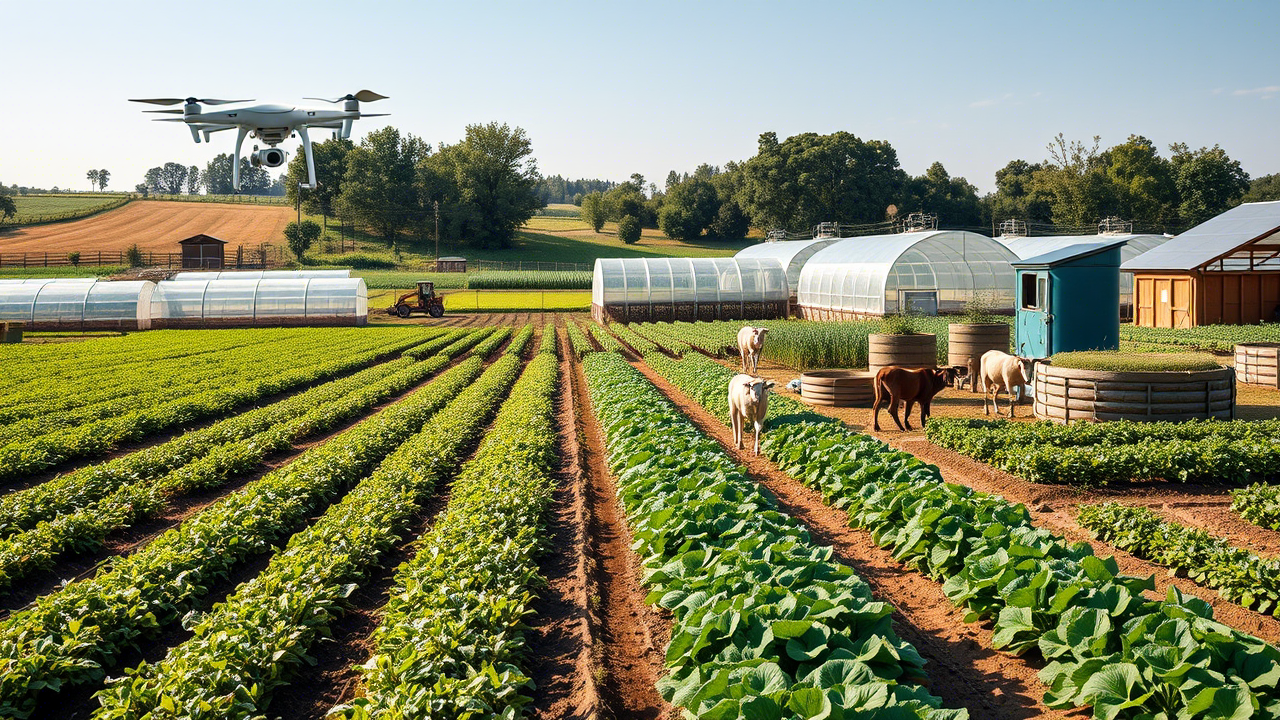Modern Farming Techniques for Higher Yields: A Gentle Approach to Sustainable Agriculture
In today’s world, where the demand for food continues to rise alongside a growing population, modern farming techniques offer a balanced solution—one that harmonizes productivity with sustainability. Unlike traditional methods that often rely heavily on manual labor and unpredictable outcomes, contemporary agricultural practices leverage technology, science, and innovation to achieve higher yields while minimizing environmental impact.
For farmers and agricultural enthusiasts looking to optimize their harvests without compromising the health of their land, here are some of the most effective modern farming techniques that can make a meaningful difference.

1. Precision Agriculture: Farming with Data
Precision agriculture transforms farming into a data-driven practice. By using GPS-guided equipment, soil sensors, and drones, farmers can monitor field conditions with remarkable accuracy.
- Soil Health Monitoring: Sensors measure moisture levels, nutrient content, and pH balance, allowing for precise fertilizer and irrigation adjustments.
- Variable Rate Technology (VRT): Instead of uniformly applying inputs, VRT tailors water, seeds, and fertilizers to the specific needs of different field zones.
- Drone Imaging: Aerial surveys help detect pest infestations, diseases, and water stress early, enabling timely interventions.
This approach reduces waste, lowers costs, and enhances crop productivity—all while fostering sustainable land use.
2. Hydroponics and Vertical Farming: Growing Beyond Soil
For regions with limited arable land or harsh climates, soil-less farming techniques like hydroponics and vertical farming offer a viable alternative.
- Hydroponics: Plants grow in nutrient-rich water solutions, leading to faster growth rates and higher yields compared to traditional soil farming.
- Vertical Farming: By stacking crops in controlled indoor environments, farmers maximize space and reduce water usage by up to 90%. LED lighting and climate control ensure year-round production.
These methods are particularly beneficial for urban farming, allowing fresh produce to be grown closer to consumers.
3. Conservation Tillage: Protecting the Soil
Traditional plowing can lead to soil erosion and loss of organic matter. Conservation tillage minimizes soil disturbance, preserving its structure and fertility.
- No-Till Farming: Seeds are planted directly into untilled soil, reducing erosion and improving water retention.
- Cover Cropping: Planting cover crops like clover or rye between harvests prevents soil degradation and enhances nutrient cycling.
This gentle approach not only maintains soil health but also reduces fuel and labor costs.
4. Integrated Pest Management (IPM): A Balanced Defense
Rather than relying solely on chemical pesticides, IPM combines biological, cultural, and mechanical strategies to control pests sustainably.
- Beneficial Insects: Ladybugs and predatory mites naturally keep harmful pests in check.
- Crop Rotation: Changing crops seasonally disrupts pest life cycles.
- Trap Crops: Planting decoy crops lures pests away from main harvests.
This method reduces chemical dependency, promoting a healthier ecosystem.
5. Drought-Resistant and Genetically Improved Crops
With climate change increasing the frequency of droughts, developing resilient crop varieties is essential.
- Drought-Tolerant Seeds: Crops like maize and wheat are now bred to thrive with less water.
- CRISPR & Genetic Editing: Scientists can enhance disease resistance and nutritional content without traditional GMO concerns.
These innovations ensure stable yields even under challenging conditions.
Conclusion: A Thoughtful Path Forward
Modern farming techniques are not about replacing tradition but refining it—using knowledge and innovation to cultivate food more efficiently and responsibly. By adopting precision tools, sustainable practices, and resilient crops, farmers can achieve higher yields while nurturing the land for future generations.
The future of agriculture lies in balance: embracing progress while respecting nature’s rhythms. And in that harmony, we find the promise of abundance.
Would you like to explore any of these techniques in more detail? Let us know in the comments below. 🌱

